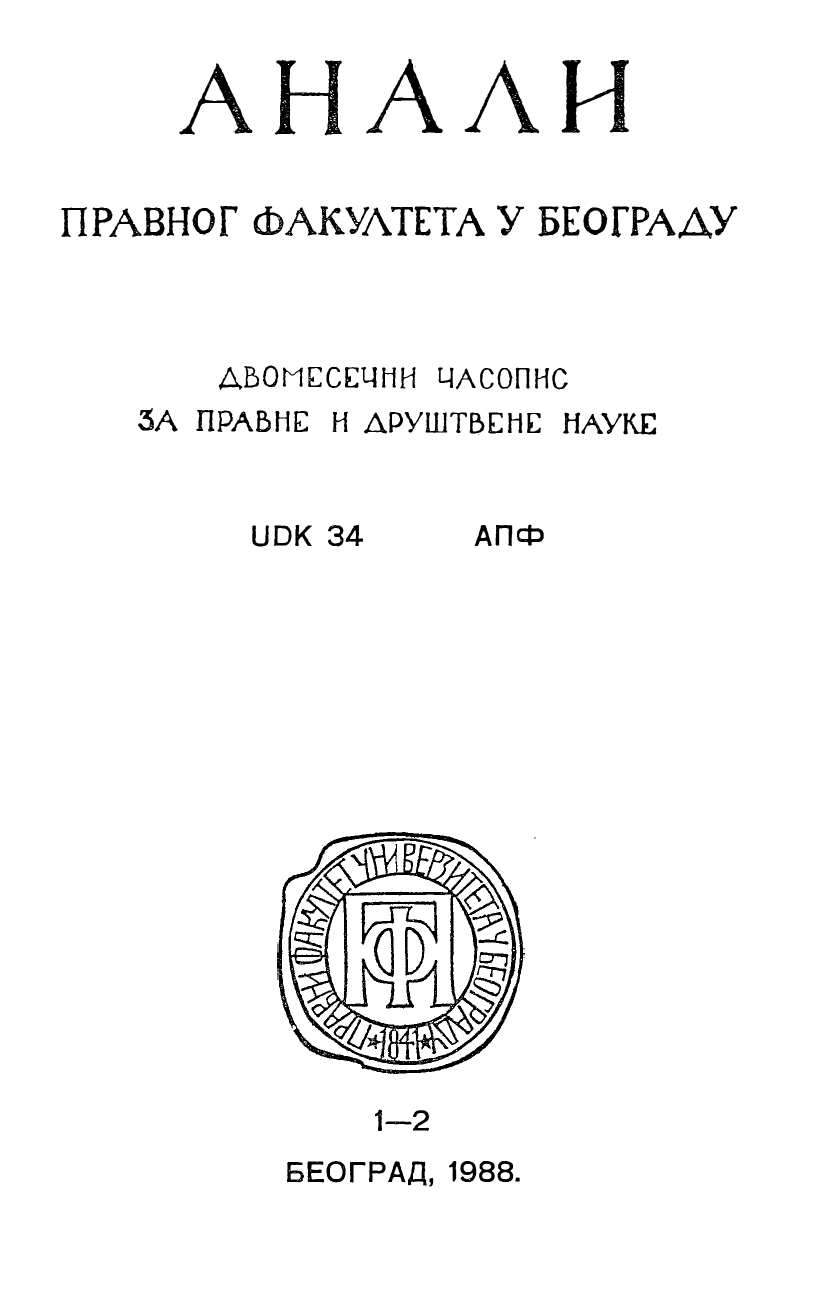ВИДОВДАНСКИ И ОКТРОИСАНИ УСТАВ ОД 3. IX 1931 ГОДИНЕ
ST. VITUS’DAУ CONSTITUTION AND THE OCTROYED CONSTITUTION OF SEPTEMBER THE 3rd, 1931
Author(s): Dragoš JevtićSubject(s): Law, Constitution, Jurisprudence, Constitutional Law
Published by: Правни факултет Универзитета у Београду
Summary/Abstract: The St. Vitus’ Day Constitution belongs to the category of constitutional pacts, while the September 3rd, 1931 one has been octroyed. Between these two constitutions there are no differences at all in terms of their system, while in terms of formal-legal power, they belong to the category of the hard constitutions. Both these instruments have provided legal framework of the capitalist socio-economic system in the prewar Yugoslavia ; they have guaranteed the rights of citizens only withing the limits of the law and they have provided for, in practice, the principle of unity of power, while all functions of power have been concentrated in the hands of the monarch. Both according the first and the second constitution, the old Yugoslavia has been a genuine monarchy, although together with the monarch there was also the Representative House, as the supreme body of power. One of the basic differences between the St. Vitus’ Day Constitution and the Constitution of September the 3rd, 1931 reflects the fact that the latter Constitution has introduced the bicameral system of the House of Representatives. Both these constitutions, however, maintain the system of limited parliamentarism and sanction the unitary state order. The St. Vitus’ Day Constitution accepts the thesis of the there-name, namely three-tribe people, while the whole series of provisions of the Octroyed Constitution in an indirect way adopts the thesis of national unitarianism, namely integral Yugoslav nationality.
Journal: Анали Правног факултета у Београду
- Issue Year: 36/1988
- Issue No: 1-2
- Page Range: 107-126
- Page Count: 20
- Language: Serbian

